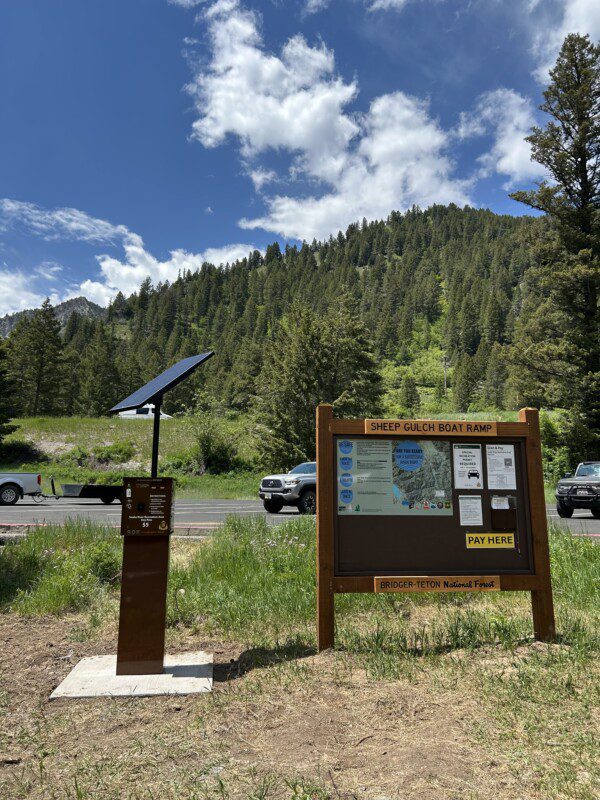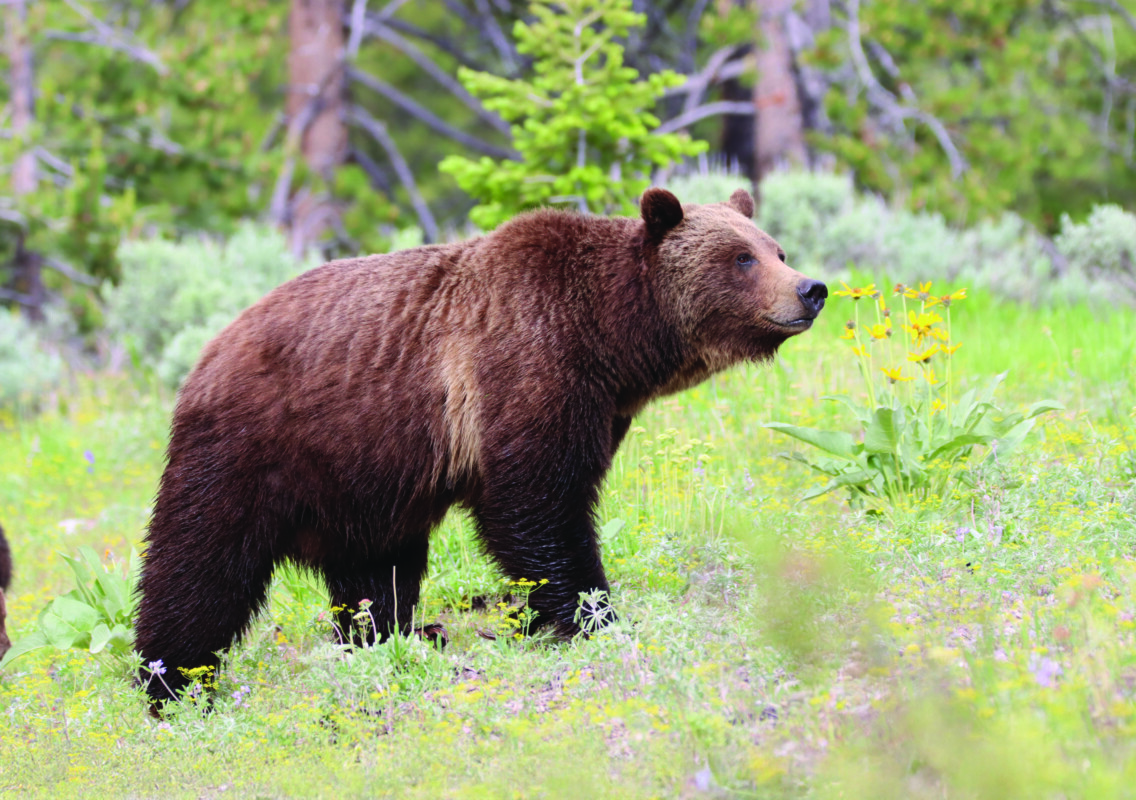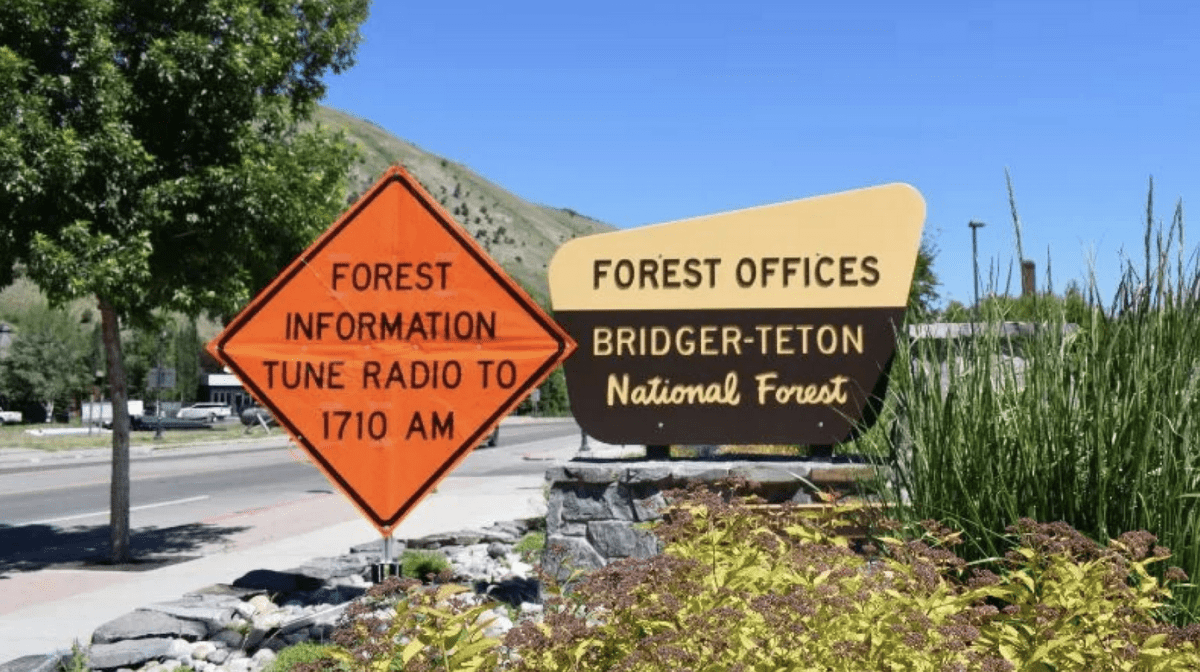Fall is the season when bears enter hyperphagia, a state in which they’re constantly in search of food and are more likely to come into human-occupied areas. You can help prevent problems for bears.
86 packages of Reese’s Peanut Butter Cups. 20 racks of ribs. 2,857 almonds. Each of these three things equal about 20,000 calories. 20,000 calories is about how much a bear should eat every day between now and when it goes into its den. Imagine how much work it is to find 20,000 calories worth of berries, roots, insects, and meat—the typical food sources of bears in the Greater Yellowstone Ecosystem—every day.
Meet hyperphagia, a state bears enter into for the several months before hibernation. Hyper means “over” and phagia means “hunger.” During hyperphagia, a bear might spend 22 hours a day eating and gain up to 4 pounds a day. The goal is to bulk up with enough fat stores to stay healthy throughout the winter. (Once they enter the den, bears go without food or water for months!) In the fall, a fat bear is a healthy bear.
Finding high volumes of food can be dangerous for bears, though. Every fall the number of bear-related conflicts rises as the animals become more likely to come into human-occupied areas. Conflicts can come from attractants such as unsecured garbage, dirty barbecues, bird feeders, compost piles, or pet food stored outside. If RV or car campers disposed of their bacon grease (or other leftovers) in a fire pit—a bear will find that interesting and come into the campground to see if there are any easy calories to be found. (A bear’s sense of smell is estimated to be about seven times greater than bloodhound’s and bears are capable of sensing food miles away.)
Hyperphagic bears aren’t only more likely to come into neighborhoods and campgrounds, but can also be more aggressive than when they’re not single-mindedly seeking out food. (During hyperphagia, bears are not only constantly hungry, but, because they’re spending up to 22 hours a day eating, also sleep-deprived, which can’t do much for their mood.)
Bridger-Teton National Forest Bear Ambassador Gene Palos says he sees more bears near roads and bears spending more time near roads during hyperphagia. “Bears are searching for easy food, like roadkill and roadside berries,” he says. “They are trying to eat and get as much food as they can for hibernation and when they find food, they’re way more protective than usual.” Palos says that a grizzly with yearlings could be especially aggressive. “That mom is eating to fatten herself up, and she’s also still nursing her cubs, although not as much as earlier in the summer. The cubs are foraging for food alongside mom, too, but mom really needs to eat a lot.”
Finding and eating 20,000 calories a day is hard enough without worrying about coming into conflict with humans. We can make the fall easier for bears by doing what we can to prevent conflicts. We want to prevent conflicts because, according to Wyoming Game and Fish, “Euthanizing a bear is the last resort for wildlife managers. But after a bear has repeatedly received food rewards, the bear’s behavior changes and it seeks out areas with humans, knowing that food can be found there, creating a human safety concern.” In 2024, in Teton County alone, 148 conflicts between humans and black bears prompted the Wyoming Game and Fish Department to relocate 10 bears and to kill six.
Palos says the biggest potential conflicts for bears near highways are roadkill and people. While Wyoming Game and Fish and Palos and other BTNF Ambassadors do patrol highways for roadkill, “we can miss a carcass,” Palos says. “We travel long distances on our patrols and it is helpful if people call it in if they see a carcass on the road or shoulder.” While a dead carcass is natural food for a bear, having bears near the highway feeding makes them more likely to be struck by cars and come into contact with humans. Once the location of roadkill is known, it is taken away.
If you see roadkill in Teton County, Wyoming, please call the Interagency Dispatch Center at 307-739-3630.
Roadkill and roadside berries aren’t the only problems for hyperphagic bears. “Roadside bears might be easy viewing but that isn’t respectful,” Palos says. NatureFirst, an international active nonprofit, has established Seven Principles of Photography designed to help educate and guide both professional and recreational photographers in sustainable, minimal impact practices that will help preserve nature’s beautiful locations. #naturefirst
There are other ways to help out bears during hyperphagia.
BearWise, an organization developed by state agency bear biologists to spread a consistent message across the U.S. about coexisting with bears, has recommendations for how to prevent problems for bears. (Wyoming Game and Fish is one of the member states of BearWise.)
AROUND THE HOUSE
1. Never feed or approach a bear: Intentionally feeding bears or allowing them to find anything that smells or tastes like food teaches them to approach homes and people looking for more. Bears will defend themselves if a person gets too close, so don’t risk your safety and theirs.
2. Secure food, garbage, and recycling: Food and food odors attract bears, so don’t reward them with easily available food, liquids, or garbage. (If you need help with this in Jackson Hole, the nonprofit Jackson Hole Bear Solutions provides tools and resources for conflict prevention, including offering financial aid for bear-resistant trash cans.)
3. Remove bird feeders when bears are active: Birdseed and grains have lots of calories, so they’re very attractive to bears. Removing feeders is the best way to avoid creating conflicts with bears.
4. Never leave pet food outside: Feed pets indoors when possible. If you must feed pets outside, feed in single portions and remove food and bowls after feeding. Store pet food where bears can’t see or smell it.
5. Clean and store grills: Clean grills after each use and make sure that all grease, fat, and food particles are removed. Store clean grills and smokers in a secure area that keeps bears out.
6. Alert neighbors to bear activity: See bears in the area or evidence of bear activity? Tell your neighbors and share info on how to avoid bear conflicts. Bears have adapted to living near people; now it’s up to us to adapt to living near bears.
For additional details about how to prevent problems around your home, go here.
DURING OUTDOOR RECREATION
1. Stay alert and stay together: Pay attention to your surroundings and stay together. Walk, hike, jog, or cycle with others when possible. Keep kids within sight and close by. Leave earbuds at home and make noise periodically so bears can avoid you.
2. Leave no trash or food scraps: Double bag your food when hiking and pack out all food and trash. Don’t burn food scraps or trash in your fire ring or grill. Leaving scraps, wrappers, or even “harmless” items like apple cores teaches bears to associate trails and campsites with food.
3. Keep dogs leashed: Letting dogs chase or bark at bears is asking for trouble; don’t force a bear to defend itself. Keep your dogs leashed at all times or leave them at home.
4. Camp safely: Set up camp away from dense cover and natural food sources. Cook as far from your tent as possible. Do not store food, trash, clothes worn when cooking, or toiletries in your tent. Store in approved bear-resistant containers OR out of sight in a locked vehicle OR suspended at least 10 feet above the ground and 10 feet from any part of the tree.
5. Know what to do if you see a bear: If you see a bear before it notices you, don’t approach. Stand still, enjoy, then quietly move away. If a bear sees you, back away slowly. Never run; running may trigger a chase response. If a bear approaches, hold your ground, wave your arms and yell “Hey Bear” until it leaves. Always stay with your group. If it keeps approaching, use bear spray. If a black bear makes contact with you, do NOT play dead; fight back aggressively. Visit Bear Encounters to learn more.
6. Carry bear spray and know how to use it: Bear Spray is proven to be the easiest and most effective way to deter a bear that threatens you. It doesn’t work like bug repellent, so never spray your tent, campsite, or belongings.
For additional details about preventing problems when recreating outdoors, go here.
https://www.naturefirstphotography.org/en/principles
While our hope is to not see hyperphagic bears in human-occupied areas, we love seeing them in Fat Bear Week (October 5–11, 2022), a social media campaign started in 2014 by Alaska’s Katmai National Park and Preserve that invites people to cast votes online for the fattest bears in Katmai. Katmai bears get ridiculously fat because they feed on salmon in the Brooks River. They eat up to 90 pounds of salmon a day! While a large grizzly in the Greater Yellowstone Ecosystem might weigh around 600 pounds at the time they den, a couple of years ago, the winner of Fat Bear Week was estimated to weigh about 1,400 pounds.
Watch Katmai’s bears feed on salmon via six rivercams in the park




